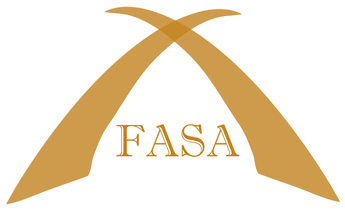Reinventing Report Cards: Reading, Writing, Collaboration and Other Work Skills
A movement to throw out traditional A-F grades in favor of tracking high school students as they gain mastery of academic and life skills is gaining momentum, with five states and powerful players joining forces to advance it.
The hope of the “Skills for the Future” collaboration is to make it easy for schools to treat so-called “durable” skills such as critical thinking, teamwork and perseverance the same as traditional subjects like math and English. That includes giving students new tests and a new report card that shows how well they have mastered those other skills as they apply to colleges or jobs.
The collaboration between the Educational Testing Service and Carnegie Foundation for the Advancement of Teaching started last year and added five states this spring — Indiana, Nevada, North Carolina, Rhode Island and Wisconsin. The Mastery Transcript Consortium which has already built a mastery-based report card became part of ETS, the company that runs the SAT and GRE college admissions tests, in May.
The partnership comes as some businesses edge toward skills-based hiring, rather than hiring for having a college degree. The partners also want to increase mastery or competency learning, where students progress at their own speed, rather than in lockstep with a class.
“This whole idea that education could be focused on durable and transferable skills is super exciting to me,” said Scott Looney, founder of the Mastery Transcript Consortium, which just added its innovative report card to the partnership this month. “It’ll make school more engaging, interesting for kids, but also make it more meaningful.”
“I think this is going to give us the ability to take this to millions of kids,” he said.
Carnegie President Tim Knowles said this new effort is a full reversal of what his foundation once promoted. In the early 1900s, the foundation popularized the credit hour or Carnegie Unit concept of measuring learning by hours spent on a subject.
But Knowles said it is clear now that students learn at different speeds and the measure that share’s his foundation’s name doesn’t work anymore. ETS, Carnegie and others in the mastery movement want students to be rated on progress toward each skill, at whatever speed works for them, regardless of when a grading period ends.
Knowles said he hopes to replace the credit hours model “where bells ring between classes, where it’s time, not competency, that is the rule of the day.”
“Our aim is to build a new architecture that would actually enable competency-based learning to move from the edges of the profession where it’s lived for 100 years to the mainstream,” he said.
The end result, said Laura Slover, managing director of the effort, will hopefully be a way to show students’ character traits that many believe are just as important to success in school, jobs and life as academic knowledge.
“We are convinced that there’s a lack of social and economic mobility in the U.S., and that we’ve moved from a knowledge economy to a skills economy,” said Slover. “We want a portable transcripts or wallet, if you will, that shows where students are in their development, skills and abilities that they can use with employers, they can use to open the doors to college, and that are fair and reliable and meaningful for kids.”
That shift, though, relies on schools to determine which skills to focus on and how to measure them. While there are many tests on subjects like English and math, there are no standard ways of measuring skills like communication, collaboration or digital literacy that carry across teachers, subjects, schools or states.
This spring, the five states that are dipping their toes into mastery joined Skills for The Future to help develop ways of measuring student progress on these durable skills.
ETS said first steps included looking at the “Portrait of a Graduate” or “Portrait of a Learner” statements that states have passed — see Nevada’s here or North Carolina’s here — that list the attributes and values they want students to have. The most common traits that will be the first priority, said Knowles, are communication, collaboration, persistence, and digital literacy, with critical thinking and creative thinking close behind.
ETS, Carnegie and the states met in California in April to brainstorm approaches, with each state now meeting with teachers, students, colleges and businesses to develop ideas to pilot as early as January, 2025. A few early possibilities include interactive testing that adjusts questions – making them harder or easier or zeroing in on certain topics – based on student answers, as some online tests do now.
Some tests could be game-based, instead of just having students answer questions.
